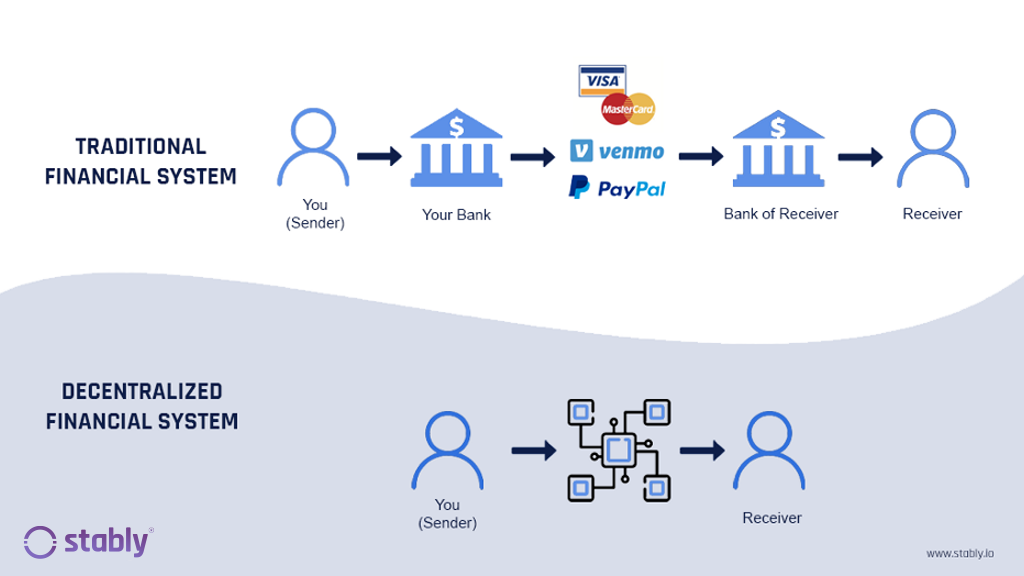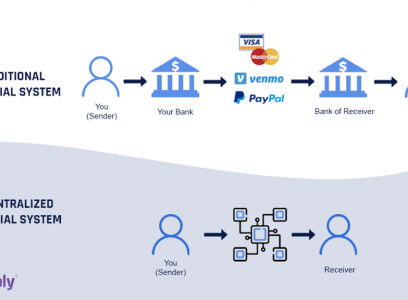
As mentioned in my previous blog post we’re going to talk about blockchain technology (I hope you have that espresso ready). Because most of us don’t really understand what it means or why it matters. Or perhaps more importantly, how it can be used or what impact it could have on society. Let’s change that, shall we? I want to start off by looking at the fundamentals of blockchain technologies and crypto currencies. We will then look at some examples of the impact it already has in countries in the Global South. We will also look at the dangers of these new developments, as there are plenty, and the challenges they bring with them. The road to financial independence is full of potential pitfalls, but is it worth the risk?
The basics
First, let’s take a brief look at what blockchain technology is exactly. A blockchain consists of chunks of data, called blocks, which are connected to each other by encryptions. Each block contains a cryptographic hash (a unique code) of the previous block, a timestamp, and transaction data. These serve as proof of its existence and validity. As each block contains information about the previous block, they form a chain, which becomes more secure the longer it gets. As a result, the blockchain is more or less unhackable, since its data is not centrally stored. This decentralisation of data prevents the blockchain from having a weak link and being vulnerable to abuse.
Blockchain technology was invented specifically for Bitcoin, the famous crypto currency we hear so much about. Bitcoin was designed to solve the problem of trust that people had in previous attempts to create a digital currency. Since Bitcoin is based on blockchain technology, no one person is in charge or has control over its data. It is managed by the participants of Bitcoin. More importantly, since each Bitcoin is unique, it cannot be faked, hacked or spent multiple times.
Real world applications of blockchain
Nowadays there are a lot of cryptocurrencies. However, there are many other applications that seek to benefit from the decentralised nature of blockchain technologies. Let’s take a brief look at some (potential) real world applications. (and check out this interactive map for a glimpse into global blockchain initiatives):
Decentralised financial services
Loans – decentralised lending works without either party having to identify themselves. This allows you to borrow money without credit checks or handing over private information to banks or financial institutions. The party providing the loan earns through interest rates.
Insurance – decentralized insurance can provide cheaper coverage for people who may not be eligible for traditional insurance. Take the example of Etherisc, who provide crop insurance to smallholder farmers in Kenya against droughts and flooding. In a region where only 3% of small farmers have crop insurance, the impact is immense.
Anti-theft and fraud
Blockchain technology is also used to detect counterfeits and forgeries by attaching unique identifiers to products, documents and shipments. For example, the Dutch Standardisation organisation NEN uses blockchain together with QR Codes to authenticate certificates.
Payments and investments

Blockchain allows you to send money worldwide with ease without having to go through a bank and/or a third-party payment system. As such, it could be used to pay rent to your landlord or salaries to your employees, for example. If you feel more adventurous and are looking to grow your wealth, you could also look into investing. There are automated services that are based on AI where you don’t have to manage anything yourself.
The potential impact and the disruptive force these applications may have on the financial world and beyond can’t be understated. So it’s important that we at least understand what it means and what the implications may be, good or bad.
If you’re interested in reading a bit more about blockchain and its potential impact on humanitarian work, I highly recommend reading this article. Though already somewhat outdated, it still provides some very interesting insights.
What could blockchain mean for the Global South?
So, we have covered some fundamentals and examples of blockchain technology. Its potential to disrupt is immense and the world has already been taken by storm by one of its applications: cryptocurrencies. In my next blog posts I will zoom in on the potential applications of blockchain technologies in the Global South and the many challenges to overcome. Not in the least the lack of access to technology and education. As well as the potentially biased way in which blockchain technology is applied in practice. I cover some of these topics in my next blog post, where we discuss the potential in Africa. So make sure you have your favourite coffee ready for that one! Stay tuned!


